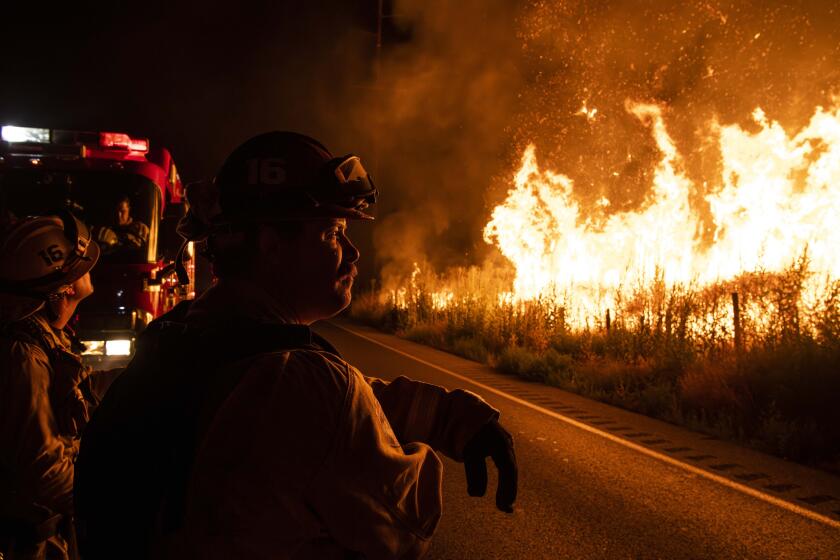SEAL BEACH : Beach Erosion Ushers City Into Times of Sand
- Share via
Beachfront residents are looking nervously out to sea as the winter storm season approaches, while city officials continue to search for sand to dump on badly eroded beaches.
The mile-long section of beach between the Seal Beach pier and the Naval Weapons Base is losing seven inches of sand each year because of erosion, bringing high tides closer to beachfront homes in the Surfside community. A storm in April pushed seawater onto the boardwalk and into nearby garages.
The last major flooding in Seal Beach occurred in 1983 when winter storms destroyed the pier and swamped Surfside homes. The city has since barricaded beaches by scooping sand into a 12-foot-high berm during the winter.
The city has been testing sand from the Whittier Narrows and Santa Ana River excavation projects. But the cost of filtering and trucking sand from Whittier Narrows is too high, City Manager Jerry L. Bankston said. A recent discovery of sand at the Santa Ana River project looks more promising.
“The initial price looks good and the sand grain size is within specifications,” Bankston said. “It’s the most favorable option for us right now.”
Before sand can be dumped on city beaches, it must meet standards of purity and grain size established by the U.S. Army Corps of Engineers.
The city has budgeted $400,000 to pay for the cost of adding 70,000 to 100,000 cubic yards of sand to city beaches. One double-trailer truckload of sand amounts to only 15 cubic yards. If the cost of the Santa Ana River sand proves favorable, city officials still would need a month to obtain state and federal permits and City Council approval before beaches could be replenished.
More to Read
Sign up for Essential California
The most important California stories and recommendations in your inbox every morning.
You may occasionally receive promotional content from the Los Angeles Times.










